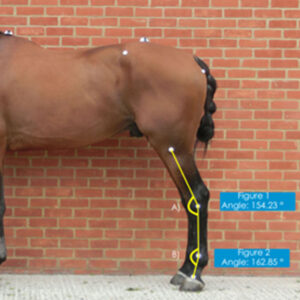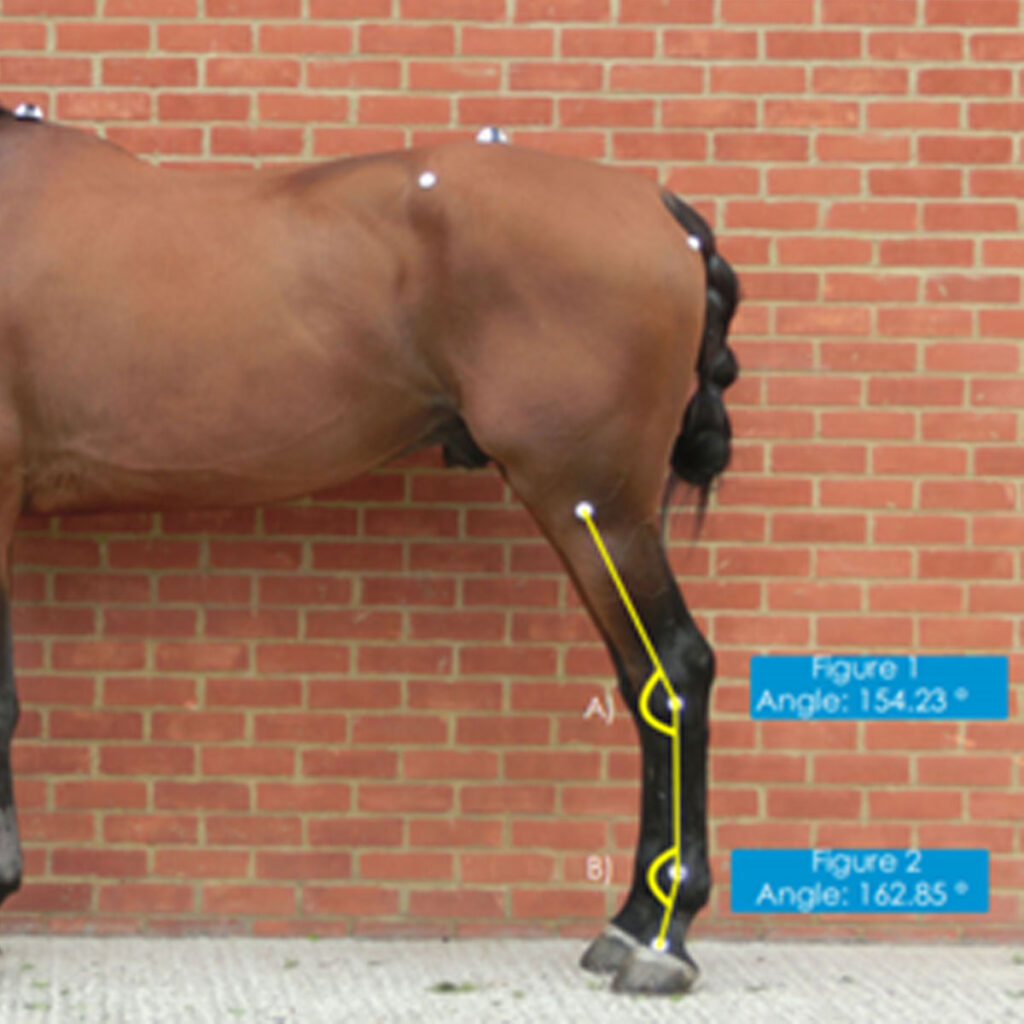Desmopathy means ligament disease, such as desmitis (ligament inflammation), but can occur without inflammation and be fascial restriction or nerve compression. The suspensory ligament (figure 1), is present in the fore and hindlimbs, with prognosis of hindlimb injury being much more guarded than forelimb, and with hindlimb often being bilateral in presentation and linked to sacroiliac dysfunction (Skivington et al. 2020) and tarsal osteoarthritis (Routh et al 2020).

It has been researched widely by Dr Sue Dyson, and is getting more widely researched in recent years. In the hindlimb it has been linked to conformation and sport, with dressage horses more predisposed to the condition, and a straight hock angulation (>158 degrees (figure 2 showing how it is measured) also a predisposing risk (Routh et al. 2020). This also provided a breed link to Warmbloods. It is also common in young horses, with forelimb injury more likely to occur if hindlimb injury is already present (Gruyaert et al. 2020).

In hindlimb injury signs such as poor impulsion, difficulty with transitions, evasive behaviours such as bucking, and reduced power in jumping or dressage movements is commented. Chronic injury may result in hyperextension (dropping) of the fetlocks over time due to lack of stability, and horses can rarely return to their previous level of work without drastic intervention (Dyson, 2007).
In showjumping and eventing the forelimb may be impacted, with signs such as not wanting to land on a certain limb, or intermittent lameness. However lameness is usually acute, and can be managed and prognosis for returning to work is good. If lameness is more severe or chronic, the horse may not be able to return to their previous level of work. Foot imbalance is a predisposing factor, with corrective farriery often the first port of call! (Dyson, 2007).
As this is a soft tissue injury lameness is usually worse on softer ground, particularly when the affected limb is on the outside due to the inability for the limb to push round, and a decreased cranial phase of the stride. Lameness is also linked to extended trot work due to the stretch on the ligament (Murray et al. 2015). Therefore varying workload and surface is key to prevention, as-well-as selecting good conformation for the sporting level.
Interventions for treatment are vast, ranging from stem cell treatments, extracorporeal shockwave therapy (McClure et al. 2004), neurectomy (nerve removal) and fasciotomy (fascia splitting) (Dyson and Murray, 2011), to pain relief and physiotherapy (Dyson, 2007).
Physiotherapy is utilised regardless of other interventions, with treatment aimed at reducing pain and inflammation, improving range of motion, improving supporting muscle mass, and improving symmetry in order to control the chronic condition, as well as reducing workload with exercises aimed at protecting the longevity of the ligament.
Any questions feel free to contact me
(image credit: horsesidevetguide.com and Routh et al. 2020)


When I arrived to this post I can only see an additional 50 percent of it, is this my web browser or the internet internet site? Ought to I restart?
I am sorry, I am not sure why, as I have had others check and it could all be seen so may have been a random error or your internet browser!